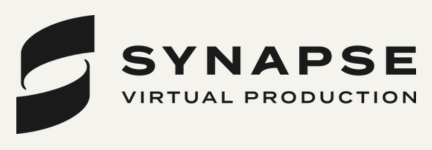
The Creative Process Behind Primark's Adaptive Collection Launch Event

The brief
Primark wanted a celebratory moment to bring together media, influencers and the adaptive community to showcase a collection of over 40 pieces which catered for the needs and abilities of people with different accessibility requirements. This was a journey, which was years in the making, following Primark’s pledge to bring affordable, adaptive fashion to the high street whilst improving store accessibility and company culture. With 24% of people in the UK living with a disability, Primark’s mission is to normalise adaptive fashion and make it as accessible for as many people as possible via their 70,000 colleagues and stores in 17 markets around the world. The collection, designed in collaboration with adaptive fashion designer and disability advocate Victoria Jenkins, offers capsule pieces and Primark favourites, all with discreet functionalities ranging from tube access to elasticated waist pulls.
The approach
Our approach always puts the story first and we had a lot to tell, so our challenge was, how do we share it in a way that would be interesting and immersive while making every touchpoint accessible? Furthermore, and what is often the process when designing the experiential piece for launches, our direction needed to be flexible in order to stay in sync with how campaign narrative evolved.
It took a few rounds of ideas to get the concept right and what we realised and what we were drawn to, was the idea that this launch moment was a chapter in an ongoing journey of learning from and collaborating with the disabled community.
Therefore our intention was to create an event which looked like a work in progress, inviting our guests behind the scenes in it.
The idea
As the timeline was short, creative and production needed to work in parallel but what can be so interesting when this happens is when the stars seem to align and things come together. After vetting over 50 venues, we found a stunning, white studio space in Shoreditch (Protein Studios) that not only had an instant feel of a fashion studio, it was also fully accessible. Being nearby to accessible transport links with drop off space outside the entrance, one level access throughout the venue, parking available, more than one accessible toilet, considered lighting for accessible needs, all routes around the displays were suitable for wheelchair use. You could visualise ideas, mood boards, materials and patterns alongside photo shoots, models and mannequin displays: that was our jump-off point.
The execution
Guests were to be immersed within a bold and colourful fashion studio setting with an array of interactive environments, surrounded by mannequins, multimedia displays and collection imagery. There would be sources of inspiration everywhere; clothing suspended artistically with lengths of chord; items clipped, clamped and pinned to mesh panels and mounting boards - all giving it that feel of something that was evolving. Guests would be able to meet Victoria Jenkins surrounded by behind-the-scenes photography and samples, as they were provided with insights into the design. There would also be an opportunity to learn more about Primark’s journey to date in adaptive fashion - from making stores more accessible for people with disabilities to ensuring inclusive representation in their marketing campaigns.
How things evolved
The event was specifically designed to be inclusive to everyone and so every aspect had to be carefully considered including choosing an accessible venue, ensuring timings meant guests travelled to and from the event outside of rush hours, selecting furniture at varying heights for all needs, casting representative models, designing easy to read graphics in terms of colours / brightness and set a low levels, providing suitable catering options, sign language interpretation, captions, alternative ways for guests to read text, ambient music and lighting, a quiet room and dog bowl for service animals.
We discovered Primark had carried out focus groups with consumers from the disabled community and luckily we managed to get the transcripts of these sessions - there were some lovely insights into their journeys, their challenges and what they were looking for in the collection. We were able to integrate these testimonials into the showcase, making it feel more authentic.
We also had the opportunity to work with the models from the collection photoshoot, some of whom had been working with Victoria Jenkins and Primark since day one. Primark’s social agency, Born Social had this beautiful direction of ‘a day in the life’ showcasing those with accessible needs doing everyday things, so we presented the models within live vignettes where at set times throughout the event they would appear revealing different collections for different parts of their day such as a dinner date, a lazy Sunday, going to work or throwing a family party.
We felt extremely proud to be involved in this progressive launch. Designing this event was a humbling and, at times, challenging experience. Questioning and analysing every small detail has really demonstrated to us how inaccessible the majority of event experiences are and we, as industry professionals, need to be more conscious of from concept through to delivery.















